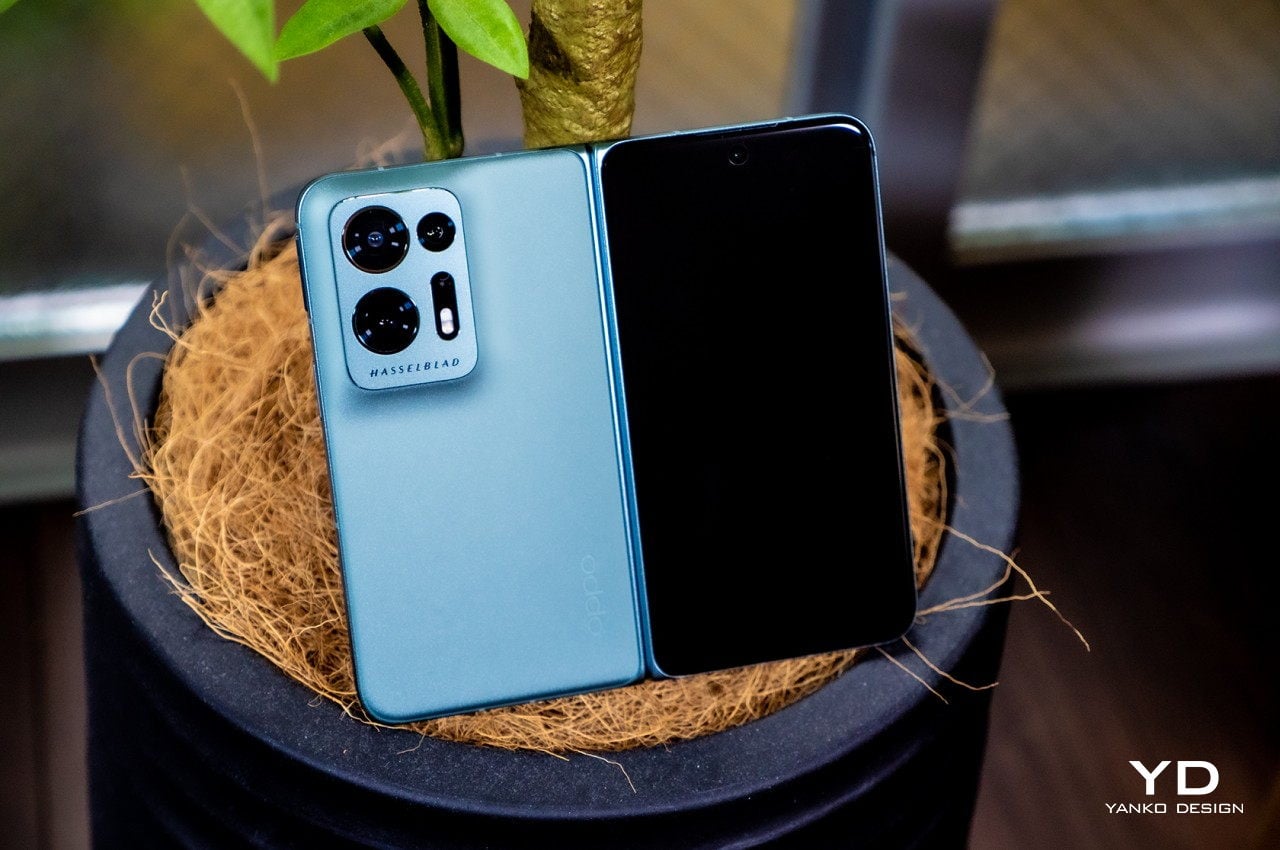
PROS:
- Lighter, thinner, more ergonomic design
- Improved Flexion hinge experience
- Impressive camera output
- Protective case included in the box
CONS:
- A few software issues
- Not available globally
Given their marketing strength, you’d think that Samsung and maybe Huawei are the only ones doing foldable phones, with a bit of Motorola on the side. Of course, there are now a few more players in that arena, especially when you turn your attention toward the East. It’s a relatively nascent market compared to the larger smartphone industry, which means there’s plenty of room for improvement but also plenty of temptations to just go with the flow. There are still plenty of unanswered questions regarding foldable phones’ design, from the reliability of its hinge to the very purpose of their existence, but those doubts never stopped companies from attempting to innovate and search for answers. OPPO, for one, seems to have done quite a lot of work for its second-gen “horizontal” foldable, so we take the OPPO Find N2 in our hands to check how much has improved and how much has remained unchanged.
Designer: OPPO
Aesthetics
It’s almost too easy to think that once you have seen one foldable phone, you’ve already seen them all. After all, there are only so many ways you can fold a device, given the limitations of today’s technologies. Right from the start, however, the OPPO Find N bucked the trend to show that there is a slightly different way to design a large, horizontal foldable phone, and the Find N2 iterates over that design almost to perfection.
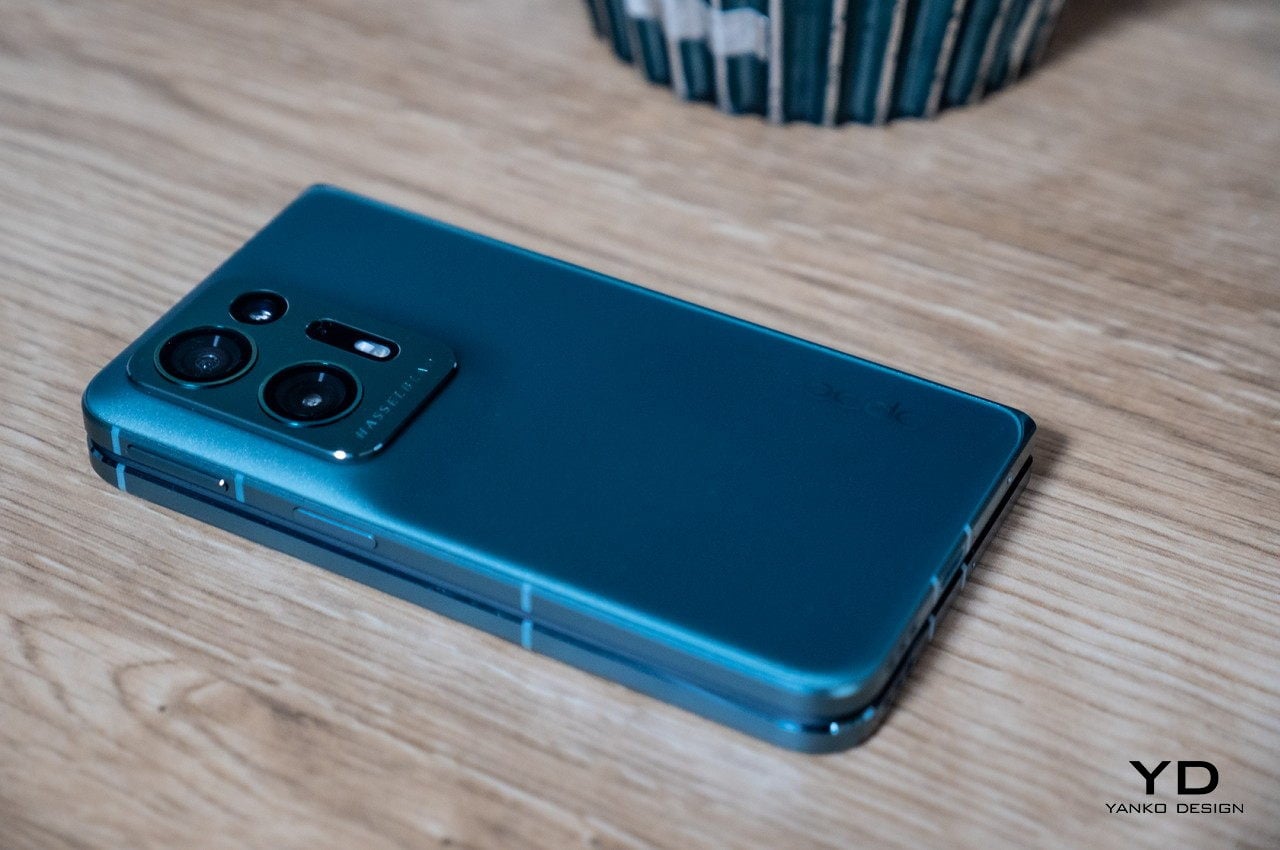
Unlike all the rest from Samsung, Huawei, Xiaomi, Honor, and Vivo, the OPPO Find N2 maintains the more familiar aspect ratios and shapes of phones and tablets. When folded closed, the “phone” isn’t an awkwardly tall and narrow piece of screen real estate that makes it difficult to even peck a few words on it. When opened up, the “tablet” is closer to a landscape or horizontal aspect ratio that’s more typical of these slates. That means you won’t have to constantly rotate the phone after opening it to watch videos properly or take advantage of split-screen functionality.
While that basic form has remained the same, OPPO’s second foldable phone does change things in subtle yet meaningful ways. You might not even notice how thinner it is compared to its predecessor, but it adds up to make the device more manageable in your hand. You will appreciate how light it is, though, which isn’t exactly surprising given how smaller it is compared to most foldables of its kind. OPPO also made important improvements in both the look and feel of the device, starting with the anodized metal frame that tastefully matches and accents the phone’s color. The back material has also been changed from glossy glass to a matte texture that helps a lot with grippy-ness. There’s even a vegan leather model that makes the phone look classy while giving something your fingers will enjoy as well.
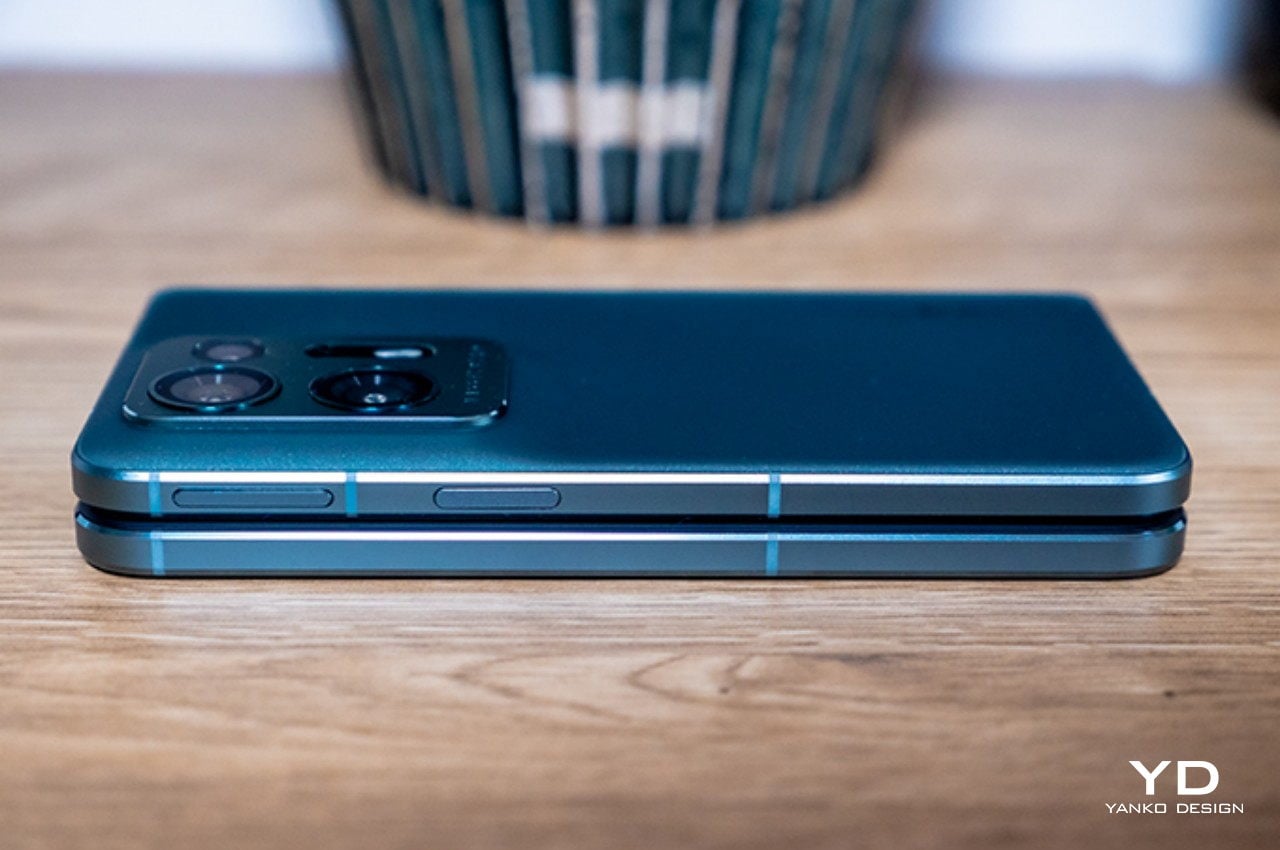
The OPPO Find N2 is undoubtedly a beauty to behold from any side or angle, especially thanks to how it folds completely flat and how the crease at the fold is nearly invisible. One design aspect that might be a bit divisive is the camera bump, something that it inherits from the first Find N. A bit like the gorgeous OPPO Find X5 Pro, that bump slopes gently upward. Unlike that award-winning design, however, there is a clear demarcation around the camera island, creating an abrupt stop in eye movement. Admittedly, it’s a minor detail that others might actually find tasteful, especially compared to more obnoxious camera bumps on other phones, foldable or otherwise.
Ergonomics
The driving force behind OPPO’s decision to stay off the beaten foldable design path is the ease of use rather than mere technological demonstration. Its smaller size and more familiar aspect ratios make it easier to hold and use even with a single hand, something that’s rare with regular phones these days. Although it might seem like you’re sacrificing screen size, what you’re really getting is a more practical and ergonomic device that looks great and feels just as great in your hands.
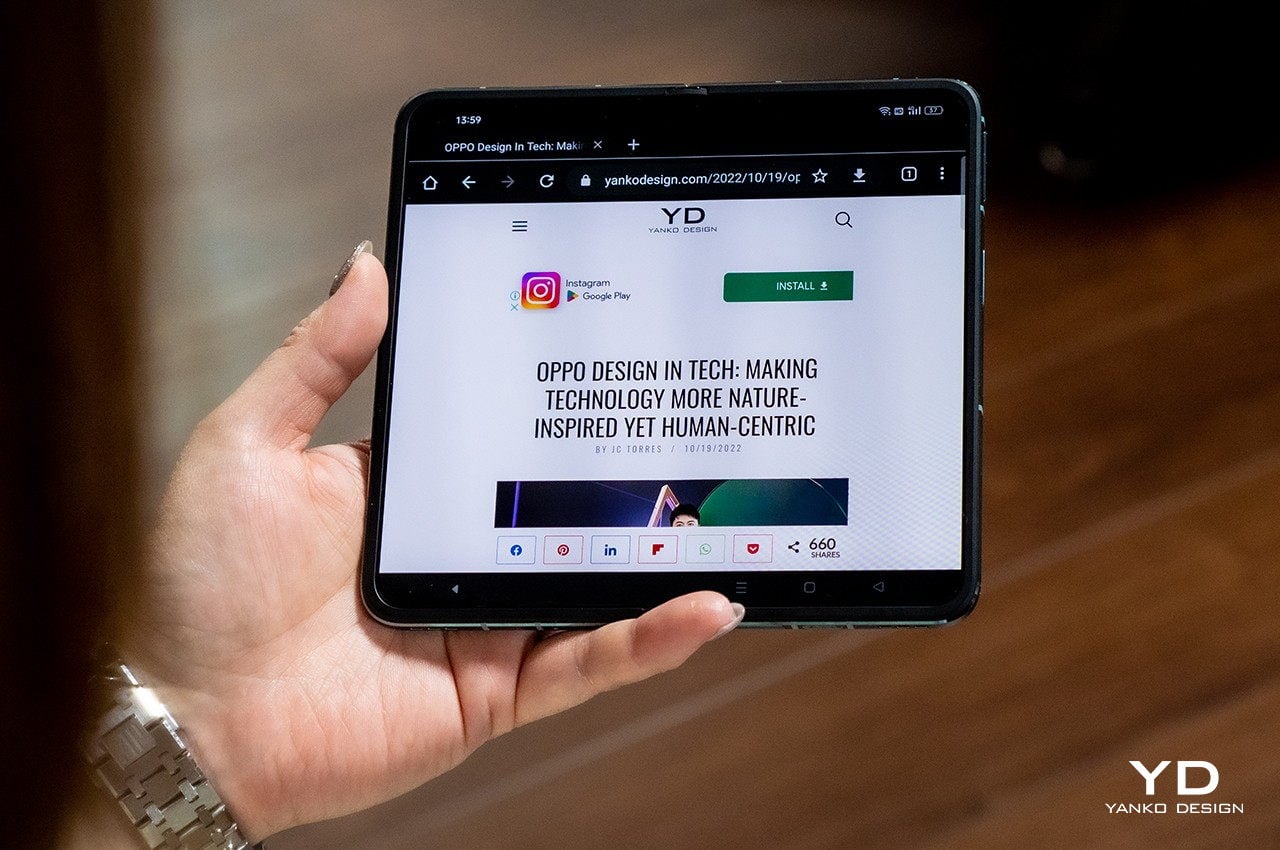
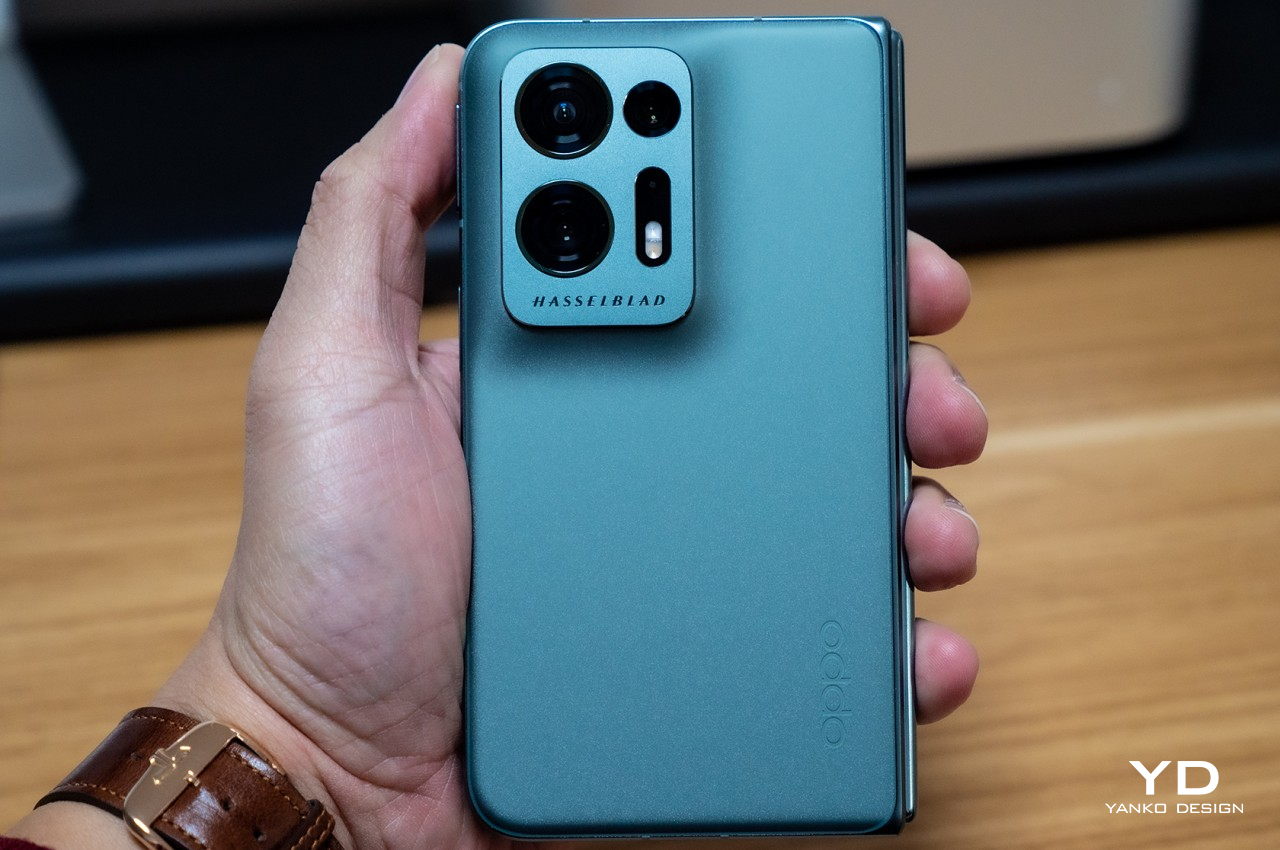
OPPO’s “waterdrop” hinge design has always made it possible to close the phone completely flat, which means it takes up less space and is effectively thinner when folded. The OPPO Find N2 further optimizes this design by making the device thinner and, more importantly, lighter, mostly by improving materials and reducing the number of parts needed in its Flexion Hinge. All of these result in a device that’s comfortable to use and puts less strain on your hands and arms. Given how you’re likely to enjoy using it for hours on end, that’s a rather significant quality of life improvement.
At the same time, OPPO has taken pains to also make sure you’re able to hold on better to the phone to prevent accidents. That switch to matte glass for the back adds a bit of texture that helps your finger grip the device better. But if you still fear your clumsiness, OPPO generously includes a two-piece protective case in the box that matches the phone’s color for added peace of mind. It’s the typical silicone case, though, so it does take away some of the phone’s stylish beauty.
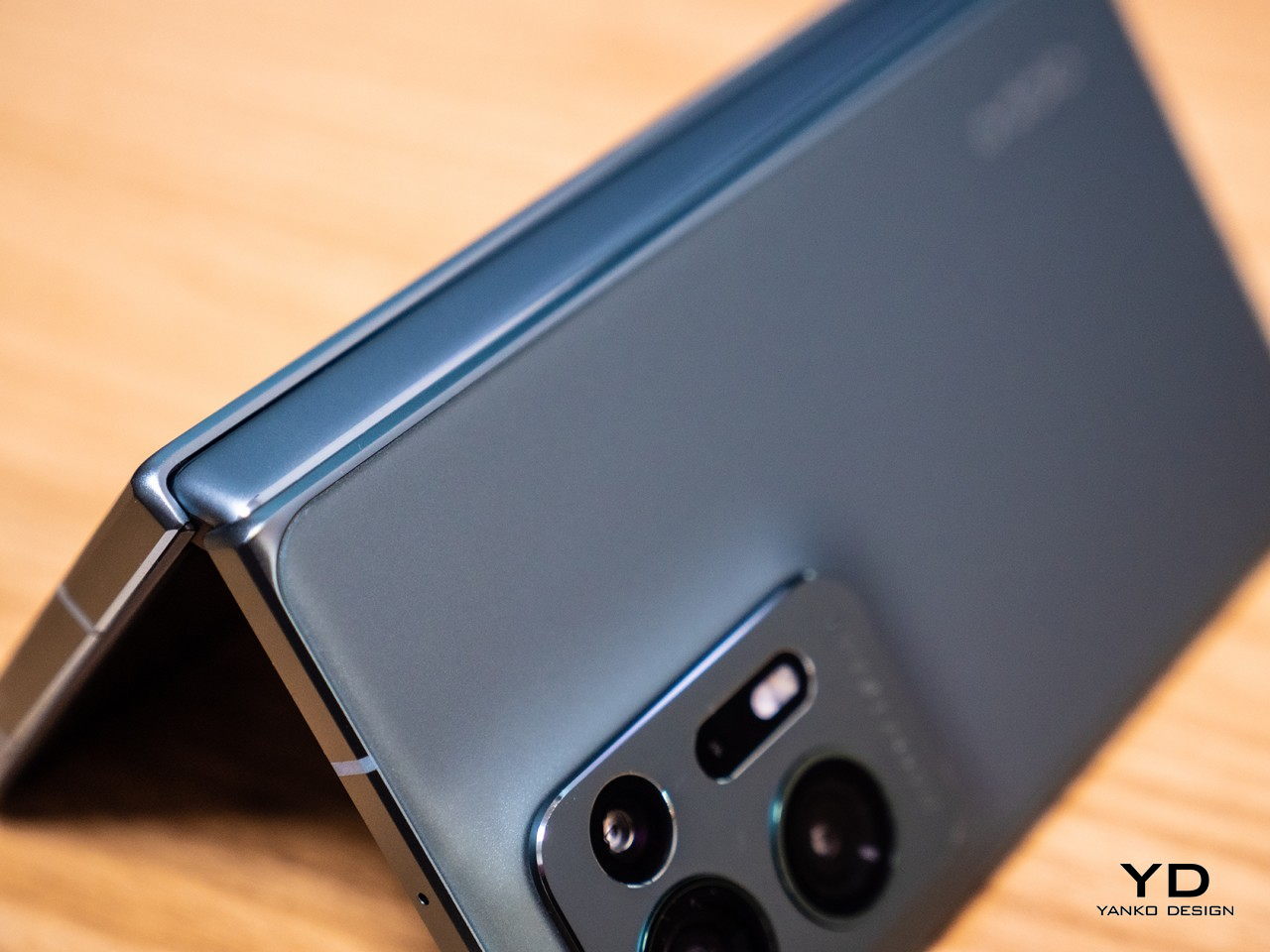
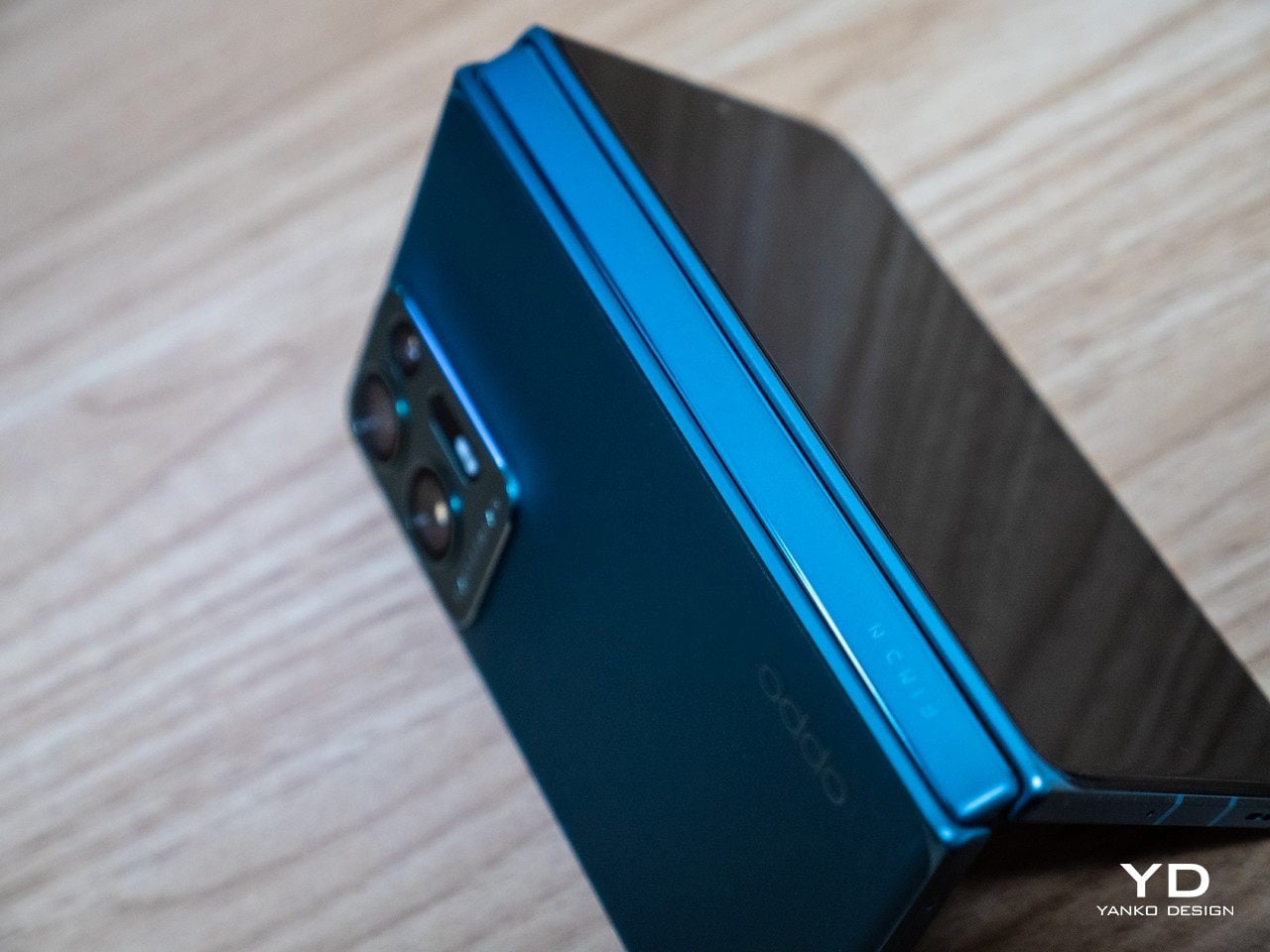
One of the biggest improvements in the OPPO Find N2 is something that you can’t see. The company’s second-generation Flexion Hinge features improved durability thanks to the use of new materials like carbon fiber and high-strength alloy. It also has 38 fewer parts than the previous-gen hinge while delivering improved robustness and reliability. For example, it can now stay open at any angle between 45 to 125 degrees. This is part of the reason why the Find N2 is lighter and more usable, without compromising its functionality.
Performance
The Find N2 is no slouch when it comes to internal components either, though it is a tad late to bear the latest mobile processor. The Qualcomm Snapdragon 8+ Gen 1, however, is very much cable of handling anything you can throw at it, especially when you consider the 12 or 16GB of memory you can utilize. In terms of raw power, there really isn’t much to complain about, and the phone will serve you well whether you’re binging the latest streaming shows, playing your favorite mobile games, or even being productive with work tasks.
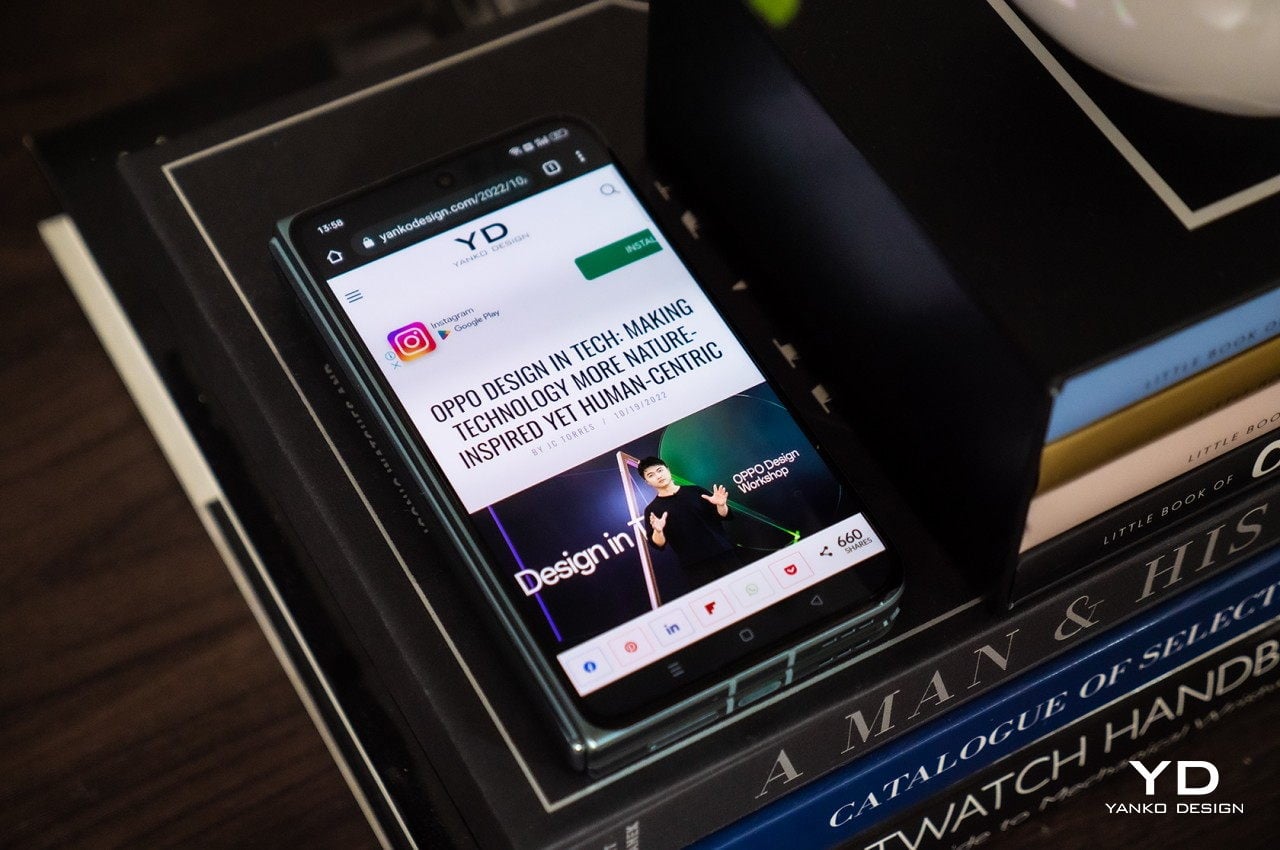
Both displays on the OPPO Find N2 are top-notch, and not just because of their aspect ratios. The external 5.54-inch 2120×1080 AMOLED display is bright and vibrant, and its 120Hz refresh rate is decent even for games. The main star is, of course, the internal 7.1-inch 1920×1792 AMOLED LTPO screen that can dial its refresh rate down to 1Hz to preserve the battery. This flexible screen is just as delightful and colorful as any other, but, more importantly, the crease that splits it into two areas is barely visible at any angle. Your finger won’t be able to tell it’s there, either, which is a far cry from the dip that even the Galaxy Z Fold 4 still has at this point.
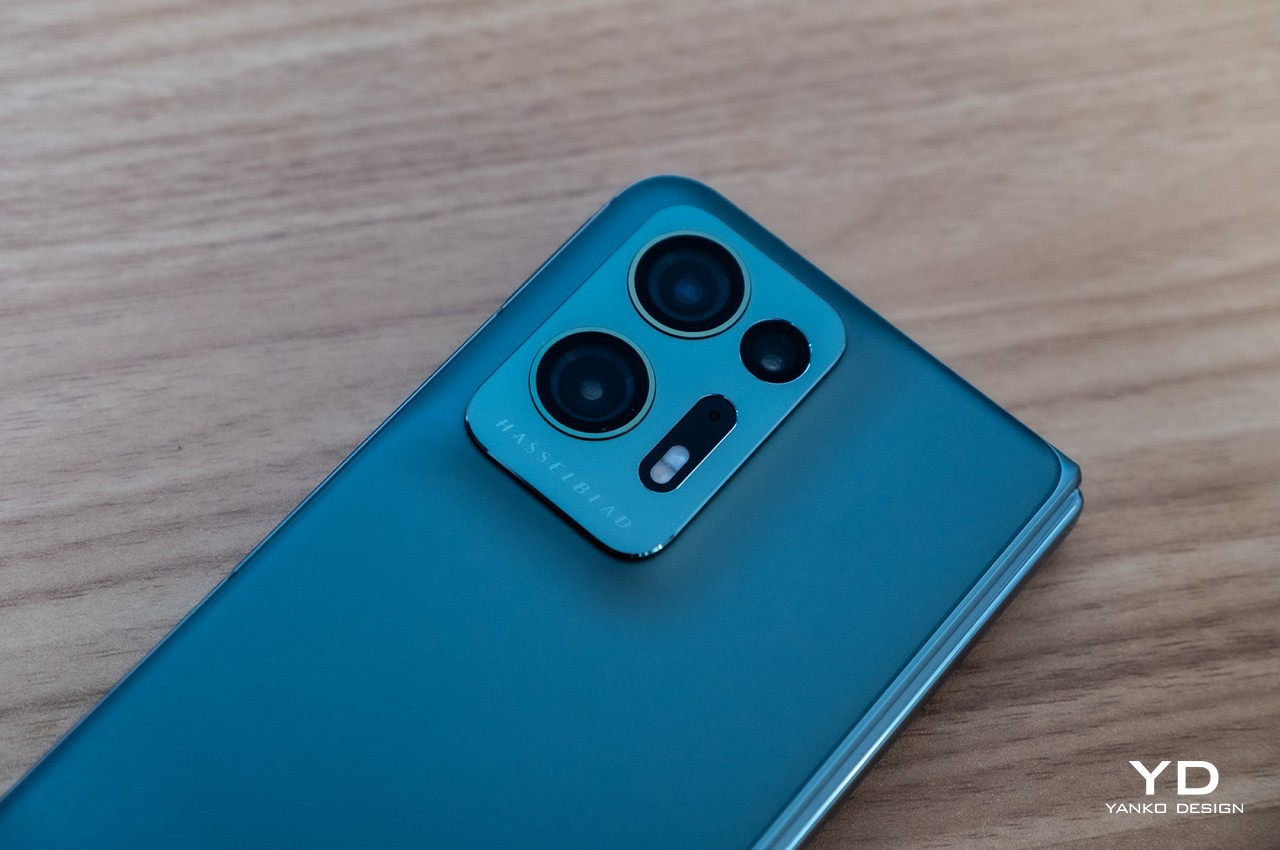
One problem with most foldable phones is that there isn’t much space to cram large cameras inside them. It’s no surprise, then, that the OPPO Find N2’s set is no match for some of the latest flagships in the market. That being said, it’s actually not bad at all, despite what the specs sheet might suggest. It definitely helps that the famed Hasselblad had a hand in fine-tuning the photography experience, especially through the software and filters. OPPO’s dedicated imaging NPU, the MariSilicon X, also deserves credit for the cameras’ performance, particularly when 4K content is involved.


The 50MP camera on its own produces excellent photos even in low-light situations. The ultra-wide camera gets a decent 48MP sensor, so you’re not actually sacrificing quality by switching to a more panoramic shot, though there are telltale signs of lens distortion at the edges. Just as impressive is the 32MP sensor on the telephoto camera, something that you won’t expect for close-up shots. The 32MP front-facing cameras, both inside and outside, are also good and won’t leave you wanting when it comes to selfies and video calls either.



The Find N2 runs OPPO’s ColorOS 13 version of Android 13, which offers a beautiful and fluid interface as well as plenty of options to customize your experience. What makes this version different are the gestures designed to make it easy to take advantage of the form factor, specifically in “splitting” the screen between two apps. That said, OPPO could only do so much to nudge Android apps to behave well in this context. You’ll find some apps still don’t play nice with foldable phones, but that is a flaw of the platform more than the hardware.

Sustainability
While OPPO is blazing a trail when it comes to innovating on foldable phones, it isn’t making inroads in changing the narrative around sustainability. There are always small steps forward, like the use of recycled paper or the reduction of packaging size, but the phones themselves mostly remain beautiful yet harmful products of human ingenuity and creativity. OPPO has also yet to jump on the slowly growing trend of making its phones more easily repairable by third parties and even owners themselves, but the complexity of a foldable phone makes that a non-starter anyway.
The OPPO Find N2 does at least improve the phone’s reliability a bit so that it won’t find itself in repair shops too soon. The reduction of the number of parts that make up the new hinge also translates to a reduction of the things that could potentially break. Improving the phone’s overall durability might not be a big sustainability gain, but it at least helps prolong the lifetime of a product and delay its arrival in landfills.
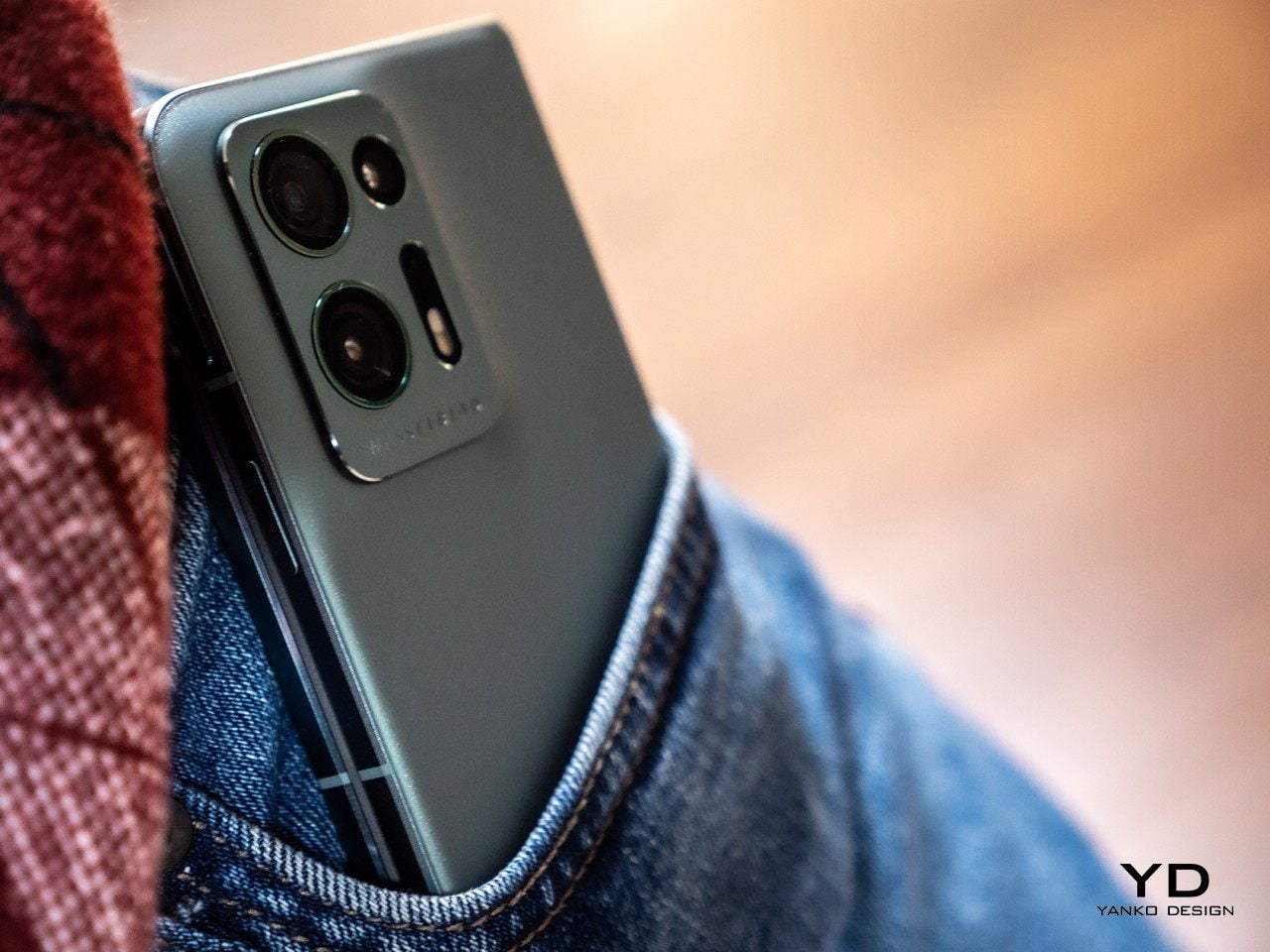
One of the three available colors for the Find N2 also uses vegan leather to offer a luxurious aesthetic that doesn’t harm the environment, particularly animals. Vegan leather, however, is also a bit controversial in how it has become somewhat of a marketing buzzword. When implemented properly, however, it’s still a more viable alternative to other non-sustainable materials that make a phone look dashing.
Value
The first foldable OPPO phone challenged the status quo of this niche market with a design that proves there’s still another way to do things. The OPPO Find N2, then, is a refinement of that design that smooths out the rough edges to deliver a product that is almost perfect, at least for what its intended goals are. Stylish and handy, the Find N2 offers a foldable device that feels like a finished product rather than an expensive prototype. Its design is clearly informed by the need to have something comfortable, usable, and aesthetic rather than simply flaunting technical and engineering innovations.
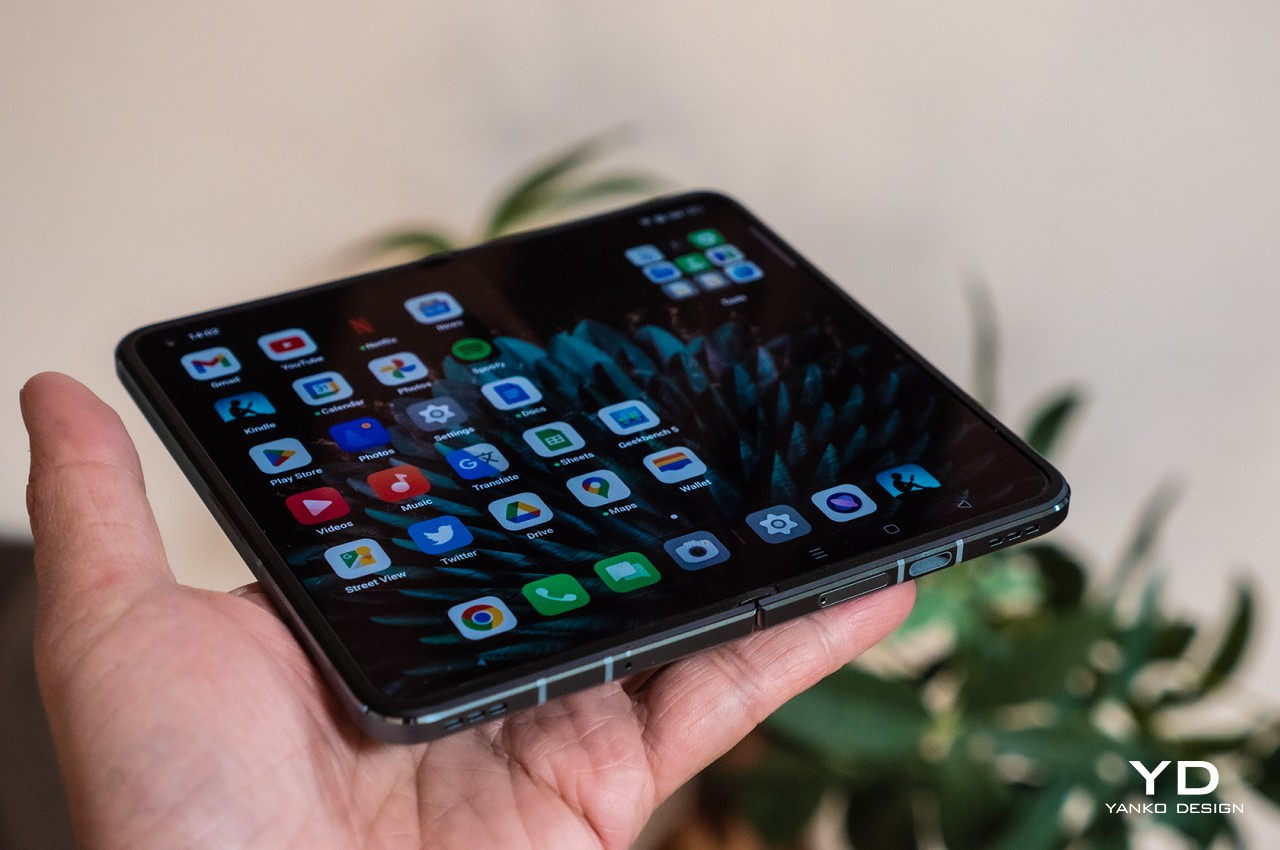
For all its strengths, the OPPO Find N2 has one critical flaw that makes all of the above almost moot and academic. It won’t be available anywhere other than China, at least not in the immediate future. And while you might be able to purchase it through third-party retailers, the software experience might be so different that it detracts from the enjoyment of the device. Fortunately, OPPO hasn’t closed the door on the possibility of a global launch, but it’s taking a wait-and-see approach in order to measure market interest.
Verdict
Many people still doubt that foldable phones, both the larger ones and the clamshell designs, are the future of mobile phones, but it’s hard to deny that they will play a large part in their development. As components become more accessible, more companies will be putting out such devices to the point that they will become commonplace. For now, however, there are only a few that dare dip their toes in that market, and even fewer who dare to be different.
The OPPO Find N2 is clearly a rare breed, not only because of how much smaller it is but also because of its focus. While all phone brands will naturally claim that they are designing for usability, OPPO takes that mission to heart. The result is a foldable device that is elegant, delightful, and practical, able to fit seamlessly into everyday life just like their non-foldable brethren.
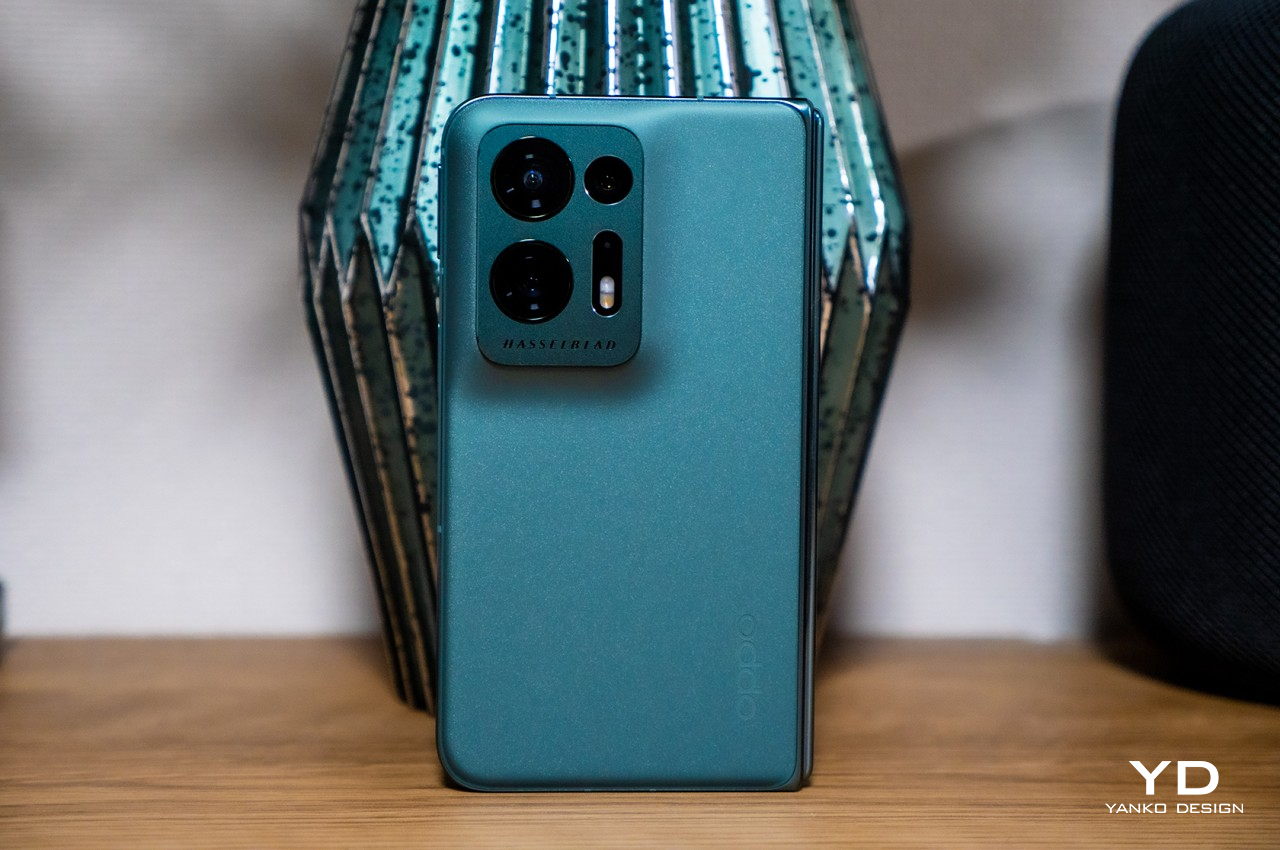
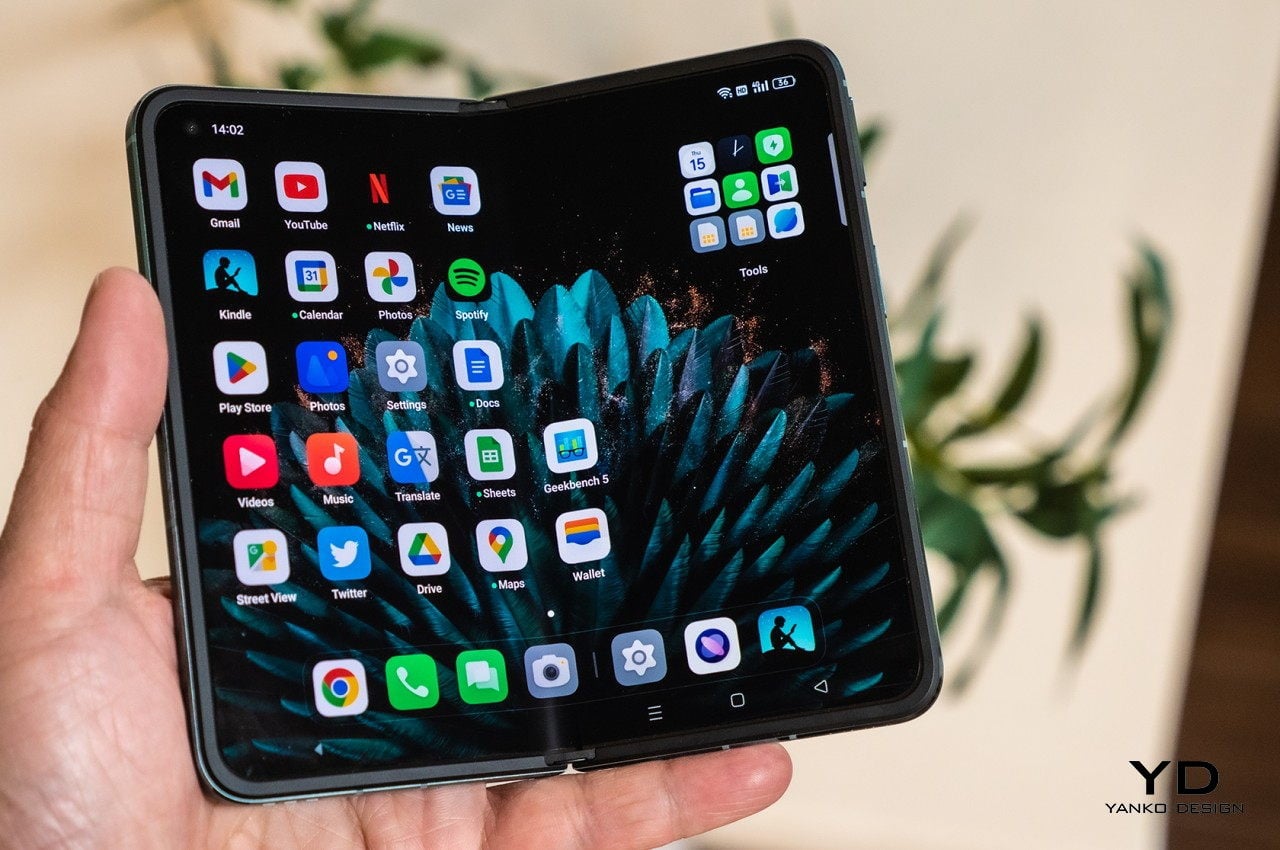
The post OPPO Find N2 Foldable Phone Review: A Design Marvel You Can Fit in Your Hand first appeared on Yanko Design.


No comments:
Post a Comment